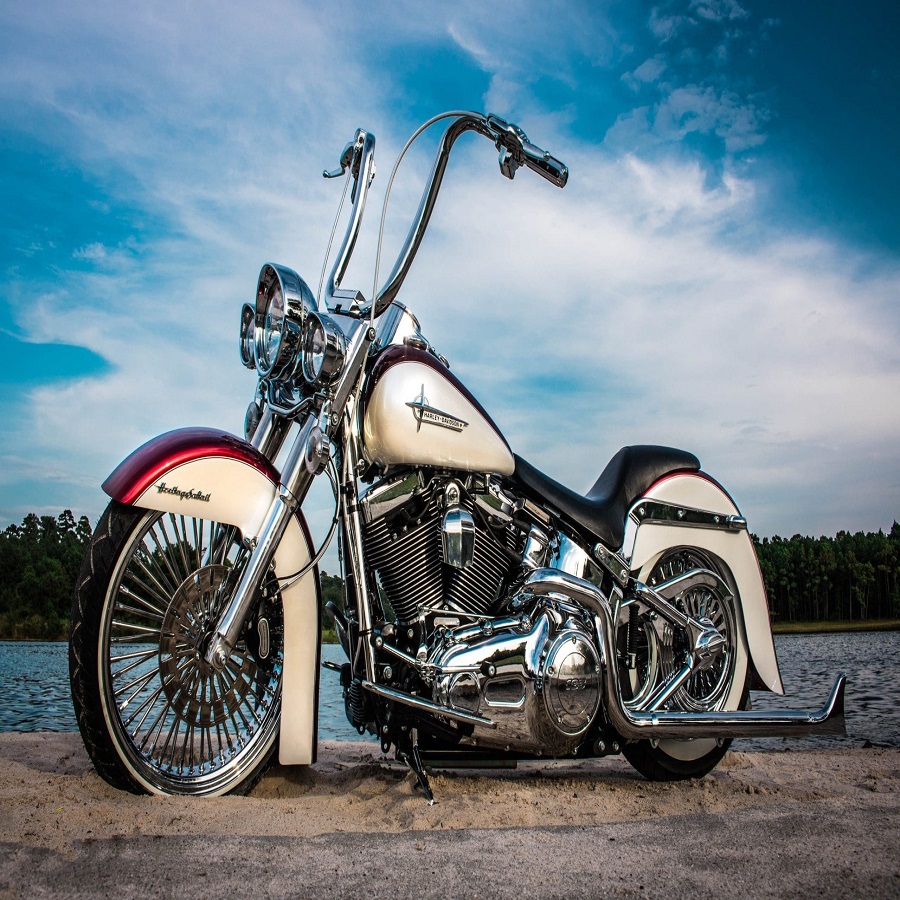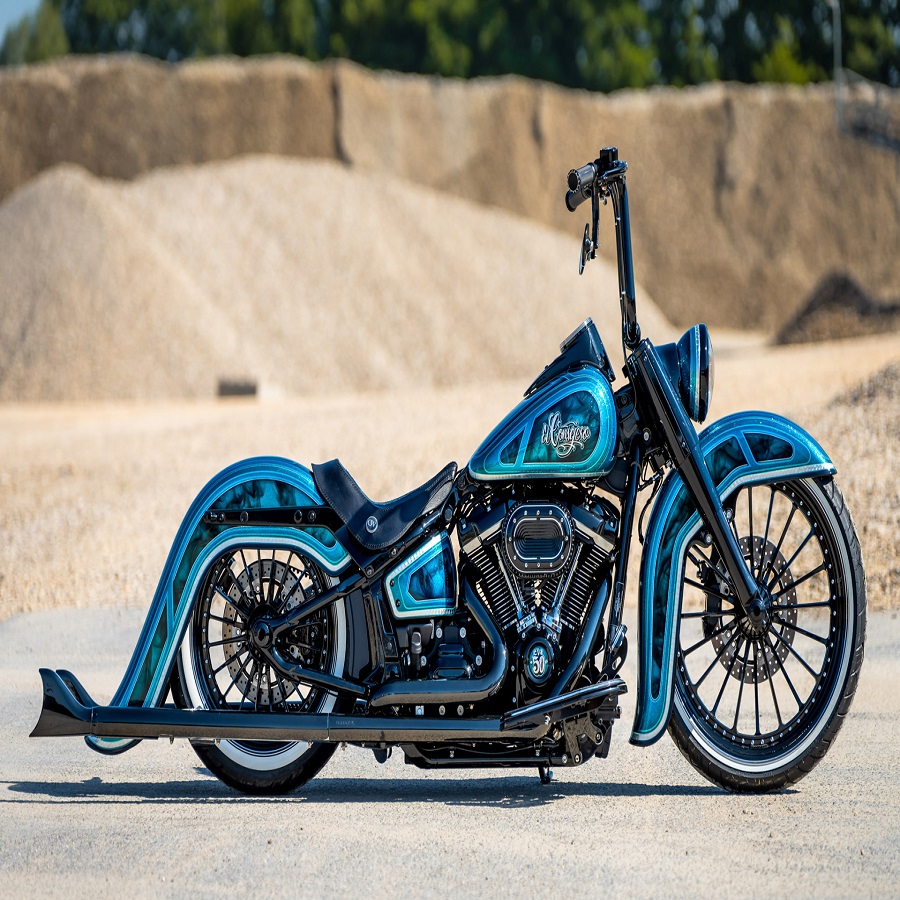Introduction
The cholo culture, rooted deeply in the Chicano community of Southern California, has long been associated with custom cars, vibrant street art, and a sense of community pride. Over the years, this distinct cultural identity has shifted towards a burgeoning subculture — lowrider motorcycles. In their own right, these custom bikes not only showcase exquisite craftsmanship but also serve as powerful symbols of identity, freedom, and artistic expression. This article delves into the rise of custom lowrider motorcycles within cholo culture, examining their origins, significance, and the unique artistry that defines them.
The Origins of Cholo Culture
Cholo culture emerged in the mid-20th century among Mexican-American communities. Often characterized by urban street fashion, tattoo artistry, and a lifestyle intertwined with gang identity, the culture has also embraced family values, community ties, and artistic expression. Lowrider cars became a staple, representing pride in heritage while allowing individuals to stand out with individualized designs.
Lowriders, often characterized by their suspended frames and exaggerated paint jobs, became a canvas for self-expression. However, as the years progressed, so did the culture’s means of expression — leading to the rise of lowrider motorcycles.
From Cars to Bikes
The transition from lowrider cars to lowrider motorcycles can be attributed to various factors. Firstly, the 21st-century urban landscape has shifted, making motorcycles a more practical choice for many riders. With increasing traffic congestion and a growing appreciation for solo rides, motorcycles present mobility and freedom that cars sometimes cannot.
Moreover, as motorcycle culture has become increasingly popular across various demographics, cholo culture began to adapt. Custom lowrider motorcycles began to pop up, blending the artistic elements of cholo aesthetics with the engineering marvels of motorcycle design.
Characteristics of Custom Lowrider Motorcycles
Custom lowrider motorcycles borrow heavily from the aesthetics of traditional lowrider cars, featuring a standout design that reflects the rider’s identity and artistic vision. Here are some defining characteristics:
- Air Ride Suspension: Many lowrider bikes are equipped with air ride suspension, allowing riders to adjust the height and stance of their motorcycles dynamically. This feature not only enhances performance but also enables riders to showcase their bikes in various positions, akin to a car show.
- Intricate Paint Jobs: The artistry involved in painting these motorcycles is astounding. Custom designs often include vibrant colors, intricate patterns, and even hand-painted murals that tell stories or celebrate cultural heritage.
- Accessories and Personalization: Like traditional lowriders, motorcycles are often adorned with chrome accents, custom seats, mini hydraulic systems, and LED lights. These personal touches make each bike unique, reflecting the owner’s personality, achievements, or cultural history.
- Cultural Symbolism: Custom motorcycles often carry symbols relevant to the Chicano community — from tattoos and religious icons to cultural motifs. These symbols often represent personal stories, familial ties, or community pride.
The Community Behind the Bikes
Another critical aspect of lowrider motorcycle culture is the sense of community it fosters. Riders frequently come together for events like bike shows, rallies, and parades. These gatherings are vibrant showcases of pride, creativity, and camaraderie. Such events allow individuals to celebrate their heritage while encouraging young riders to engage with their roots.
Often, clubs emerge around these shared passions — just like car clubs in the past. These motorcycle clubs serve as extensions of family, providing support, mentorship, and security within the community.
Challenges and Misconceptions
Despite the artistic merit and cultural significance of custom lowrider motorcycles, they face challenges and misconceptions. Law enforcement has historically targeted cholo culture and its manifestations, leading to stereotypes and undue scrutiny.
Moreover, the growing popularity of lowrider motorcycles risks commercialization, potentially diluting the cultural essence behind them. As the market for custom bikes becomes more mainstream, it’s vital for artists and community members to remain vigilant and ensure that cultural authenticity is maintained.
Historical Context
To understand the Cholo motorcycle scene, one must first explore the historical roots of the Cholo identity itself. The term “Cholo” emerged in the late 19th and early 20th centuries, describing a distinct Mexican-American subculture that blended Indigenous, Mexican, and American influences. Often associated with urban youth, Cholos adopted distinct styles of dress, music, and expression, carving out a space for themselves in a rapidly changing social landscape.
In the 1940s and 1950s, post-war America saw a rise in motorcycle culture, influenced by returning veterans who often embraced the freedom symbolized by these machines. As Cholo culture evolved in cities like Los Angeles, San Diego, and Chicago, so did the motorcycle scene, where bikes became more than just a mode of transport—they represented a form of rebellion, community, and identity.
 The Evolution of the Scene
The Evolution of the Scene
Throughout the decades, the Cholo motorcycle scene evolved, influenced by various social and cultural factors. By the 1970s and 1980s, motorcycle clubs began to form, often mirroring the structure and camaraderie found in traditional Cholo gangs. These clubs typically comprised young men and women who shared a passion for motorcycles—Harley-Davidson, in particular—along with the values of respect, loyalty, and brotherhood.
The aesthetics of the Cholo motorcycle scene are distinctive. Bikes are often customized with vibrant paint jobs that incorporate lowrider influences, featuring intricate designs and attention to detail. Riders frequently blend Cholo fashion—such as baggy khaki shorts, flannel shirts, and signature tattoos—with motorcycle gear, creating a unique style that stands out on the streets.
Cultural Significance
The Cholo motorcycle scene serves not only as a recreational activity but also as a medium for cultural expression and community solidarity. Motorcyclists often take to the streets to participate in local events, parades, and charity rides, fostering a sense of belonging and shared purpose. These gatherings allow riders to celebrate their cultural heritage while advocating for social causes affecting their communities.
Moreover, the motorcycle scene challenges negative stereotypes often associated with both motorcyclists and Cholo culture. By showcasing the positive aspects of their lifestyles—like community service, mentorship, and family values—riders unite to break down societal barriers and promote mutual respect.
A Community of Belonging
The bonds formed within the Cholo motorcycle scene are profound. Riders often refer to each other as “brothers” or “sisters,” highlighting the familial ties created through shared experiences. The act of riding together fosters a spirit of camaraderie, helping to instill a sense of belonging that can be vital, especially for young people in urban areas who might feel marginalized.
Moreover, these clubs often engage in mentoring programs for youth, providing guidance on life skills, responsibility, and safety. By promoting positive values and lifestyles, they serve as role models within their communities, demonstrating that motorcycles can symbolize both freedom and responsibility.
Challenges and Controversies
While the Cholo motorcycle scene is rich in culture and community, it is not without its challenges. Motorcyclists, in general, often face scrutiny from law enforcement and societal stigma. The fusion of Cholo identity with motorcycle culture can risk perpetuating negative stereotypes that paint riders as dangerous or delinquent.
Additionally, issues of safety and respect on the road remain pertinent. As the community grows, so does the need for responsible riding practices and adherence to traffic laws to ensure that the scenic camaraderie does not devolve into reckless behavior, which can further attract law enforcement scrutiny.
The Future of the Cholo Motorcycle Scene
As the Cholo motorcycle scene continues to evolve, it also reflects broader trends in society. The rise of social media has allowed these communities to connect on a larger scale, promoting visibility and inclusivity. Facebook groups and Instagram pages dedicated to Cholo riders have become platforms where enthusiasts share their stories, bike modifications, and events far beyond local neighborhoods.
With the new generation of riders, the scene is also becoming more diverse, incorporating young women, people from various ethnic backgrounds, and a broader range of motorcycle styles. This evolution is reshaping perceptions of what it means to be part of the Cholo motorcycle community.
 Conclusion
Conclusion
The rise of custom lowrider motorcycles within cholo culture is a testament to the resilience and adaptability of a vibrant community. These machines are more than just modes of transportation; they are rolling works of art, cultural symbols, and a means of expression.
As we look to the future, it is crucial to acknowledge and respect the cultural heritage that informs this movement. Engaging with the community, fostering creativity, and honoring the traditions that gave rise to lowrider motorcycling will ensure its legacy endures for generations to come. As the wheels roll on, so too will the stories they carry, echoing the spirit of a culture forever moving forward.

Leave a Reply